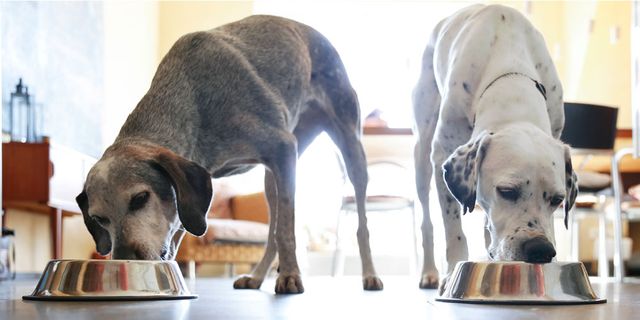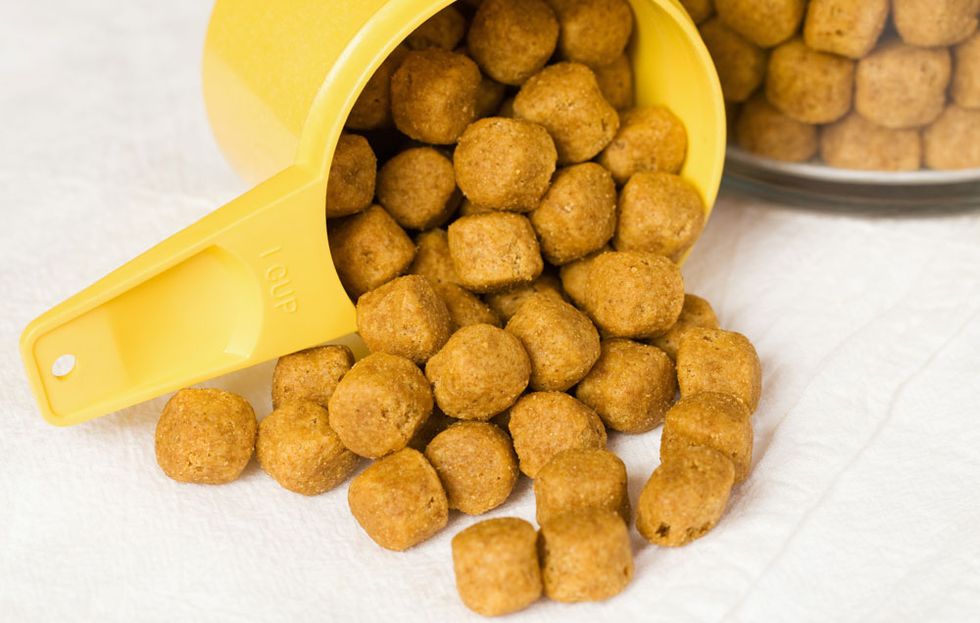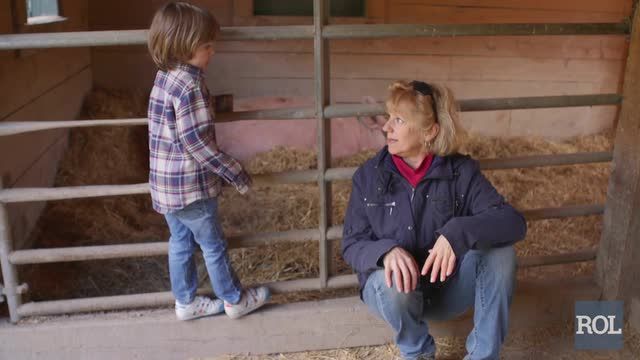You’ve heard about the terrible ingredients that can be lurking in many cheap, store-bought pet foods. So you’ve done your due diligence, researched a variety of brands, and finally settled on a food that meets your pup’s dietary needs and your high standards. But what now—do you just make the switch over night?
While not all vets agree, the general consensus is a gradual tapering process so your dog’s gut and digestive system has time to adjust. Here’s exactly what that means, and some things you can do along the way to make the transition easier.
(Brag your love of gardening with the Organic Life 2018 Calendar, featuring gorgeous photographs, cooking tips and recipes, plus how to eat more—and waste less!— of what's in season.)
Add new food gradually
Many veterinarians recommend a gradual break-in period, meaning that you slowly wean your dog off one food while gradually introducing her to the other. Follow the 10 percent rule: Change the food just 10 percent every day for 10 days, says Barbara Royal, D.V.M., integrative veterinarian who specializes in pet nutrition at the Royal Treatment Veterinary Center in Chicago.
You don’t have to be 100% exact, but you should try to get close. Let’s say your dog typically gets 1 cup (or 8 ounces) of food in the morning. This means that on day 1, you’d add just under a cup of food (or around 7 ounces) to a measuring cup and then fill the remainder with 1 ounce of your dog’s new food. The easiest way to do this accurately is with a see-through Pyrex measuring cup.
Related: 4 Holistic Vets Reveal Exactly What They Feed Their Own Dogs
Check your pup's poop
Other vets, however, say that for most dogs, no break-in period is necessary. How do you know? By checking their stool. “While you will see some changes in their poop, it should still stay formed,” says Susan G. Wynn, D.V.M., D.A.C.V.N., board-certified veterinary nutritionist and integrative practitioner with BluePearl Veterinary Specialists in Atlanta. The ideal poop is a nice firm log. If the stool is too loose, however, go back to the slow transition. (Here are 6 more things your dog's poop can tell you about its health.)
(Watch this cute kiddo explain his decision to become a vegetarian.)
Consider a probiotic
At the same time, give your dog a probiotic supplement (like this one) or probiotic-containing food like goat’s milk yogurt, which is easier on dogs’ stomachs than cow’s milk. “Change in foods can disrupt the balance of bacteria in the gut,” Wynn says. Yet the probiotic will help restore that bacteria. Start giving the probiotic a few days before you want to introduce the new food. Continue giving that probiotic daily through the change and even for several days after she’s been eating the new food.
Related: 3 Supplements Holistic Vets Give Their Pets Every Single Day
Consider rotating foods regularly
Turns out, there may be a good reason to make this transition a routine event so that you’re switching between two to three good brands of dog food on a regular basis. By choosing two to three brands, each of which is formulated differently, you might gain greater insight into what works best for your dog, Wynn says. An unexpected bonus? “When you change foods, you’re changing the signals to your dog’s nervous and immune systems, which stimulates the immune system to keep your dog healthier,” she adds.
Just don’t feed two foods at the same time (except when you’re transitioning). Instead, use one food for a month before switching to the other and continue alternating in this fashion.














